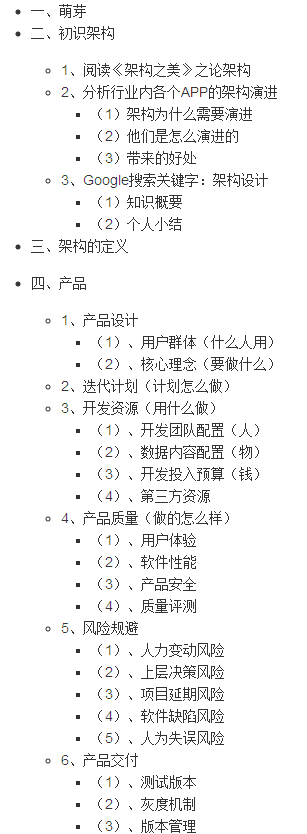This setup should be based on a proxmox, being behind a opnsense VM hosted on the Proxmox itself which will protect proxmox, offer a firewall, a privat LAN and DHCP/DNS to the VMs and offer a IPsec connection into the LAN to access all VMs/Proxmox which are not NATed.
The server is the typical Hetzner Server, so only on NIC but multiple IPs or/subnets on this NIC.
- Proxmox Server with 1 NIC(eth0)
- 3 Public 1IPs, IP2/3 are routed by MAC in the datacenter (to eth0)
- eth0 is PCI-Passthroughed to the OPNsense KVM
- A private network on vmbr30, 10.1.7.0/24
- An IPsec mobile client connect (172.16.0.0/24) to LAN
To better outline the setup, i create this [drawing][1]: (not sure its perfect, tell me what to improve)
Questions:
How to setup such a scenario using PCI-Passthrough instead of the Bridged Mode.
Follow ups
I) Why i cannot access PROXMOX.2 but access VMEXT.11 (ARP?)
II) is why do i need a from * to * IPSEC chain rule to get ipsec running. That is most probably a very much opnsense related question.
III) I tried to handle the 2 additional external IPs by adding virtual ips in OPNsense, adding a 1:1 nat to the internal LAN ip and opening the firewall for the ports needed ( for each private lan IP ) - but yet i could not get it running. The question is, should each private IP have a seperate MAC or not? What is specifically needed to get a multi-ip setup on WAN
General high level perspective

Adding the pci-passthrough
A bit out of scope, but what you will need is
- a serial console/LARA to the proxmox host.
- a working LAN connection from opnsense (in my case vmbr30) to proxmox private ( 10.1.7.2 ) and vice versa. You will need this when you only have the tty console and need to reconfigure the opnsense intefaces to add
em0 as the new WAN device
- You might have a working IPsec connection before or opened WAN ssh/gui for further configuration of opnsense after the passthrough
In general its this guide - in short
vi /etc/default/grub
GRUB_CMDLINE_LINUX_DEFAULT="quiet intel_iommu=on"
update-grub
vi /etc/modules
vfio
vfio_iommu_type1
vfio_pci
vfio_virqfd
Then reboot and ensure you have a iommu table
find /sys/kernel/iommu_groups/ -type l
/sys/kernel/iommu_groups/0/devices/0000:00:00.0
/sys/kernel/iommu_groups/1/devices/0000:00:01.0
Now find your network card
lspci -nn
in my case
00:1f.6 Ethernet controller [0200]: Intel Corporation Ethernet Connection (2) I219-LM [8086:15b7] (rev 31)
After this command, you detach eth0 from proxmox and lose network connection. Ensure you have a tty! Please replace "8086 15b7" and 00:1f.6 with your pci-slot ( see above)
echo "8086 15b7" > /sys/bus/pci/drivers/pci-stub/new_id && echo 0000:00:1f.6 > /sys/bus/pci/devices/0000:00:1f.6/driver/unbind && echo 0000:00:1f.6 > /sys/bus/pci/drivers/pci-stub/bind
Now edit your VM and add the PCI network card:
vim /etc/pve/qemu-server/100.conf
and add ( replace 00:1f.6)
machine: q35
hostpci0: 00:1f.6
Boot opnsense connect using ssh root@10.1.7.1 from your tty proxmox host, edit the interfaces, add em0 as your WAN interface and set it on DHCP - reboot your opnsense instance and it should be up again.
add a serial console to your opnsense
In case you need a fast disaster recovery or your opnsense instance is borked, a CLI based serial is very handy, especially if you connect using LARA/iLO whatever.
Do get this done, add
vim /etc/pve/qemu-server/100.conf
and add
serial0: socket
Now in your opnsense instance
vim /conf/config.xml
and add / change this
<secondaryconsole>serial</secondaryconsole>
<serialspeed>9600</serialspeed>
Be sure you replace the current serialspeed with 9600. No reboot your opnsense vm and then
qm terminal 100
Press Enter again and you should see the login prompt
hint: you can also set your primaryconsole to serial, helps you get into boot prompts and more and debug that.
more on this under https://pve.proxmox.com/wiki/Serial_Terminal
Network interfaces on Proxmox
auto vmbr30
iface vmbr30 inet static
address 10.1.7.2
address 10.1.7.1
netmask 255.255.255.0
bridge_ports none
bridge_stp off
bridge_fd 0
pre-up sleep 2
metric 1
OPNsense
- WAN is External-IP1, attached em0 (eth0 pci-passthrough), DHCP
- LAN is 10.1.7.1, attached to vmbr30
Multi IP Setup
Yet, i only cover the ExtraIP part, not the extra Subnet-Part. To be able to use the extra IPs, you have to disable seperate MACs for each ip in the robot - so all extra IPs have the same MAC ( IP1,IP2,IP3 )
Then, in OPN, for each extern IP you add a Virtual IP in Firewall-VirtualIPs(For every Extra IP, not the Main IP you bound WAN to). Give each Virtual IP a good description, since it will be in the select box later.
Now you can go to either Firewall->NAT->Forward, for each port
- Destination: The ExtIP you want to forward from (IP2/IP3)
- Dest port rang: your ports to forward, like ssh
- Redirect target IP: your LAN VM/IP to map on, like 10.1.7.52
- Set the redirect port, like ssh
Now you have two options, the first one considered the better, but could be more maintenance.
For every domain you access the IP2/IP3 services with, you should define local DNS "overrides" mapping on the actually private IP. This will ensure that you can communicate from the inner to your services and avoids the issues you would have since you used NATing before.
Otherwise you need to care about NAT reflection - otherwise your LAN boxes will not be able to access the external IP2/IP3, which can lead to issues in Web applications at least. Do this setup and activate outbound rules and NAT reflection:

What is working:
- OPN can route a]5]5ccess the internet and has the right IP on WAN
- OPN can access any client in the LAN ( VMPRIV.151 and VMEXT.11 and PROXMOX.2)
- i can connect with a IPSec mobile client to OPNsense, offering access to LAN (10.1.7.0/24) from a virtual ip range 172.16.0.0/24
- i can access 10.1.7.1 ( opnsense ) while connected with IPsec
- i can access VMEXT using the IPsec client
- i can forward ports or 1:1NAT from the extra IP2/IP3 to specific private VMs
Bottom Line
This setup works out a lot better then the alternative with the bridged mode i described. There is no more async-routing anymore, there is no need for a shorewall on proxmox, no need for a complex bridge setup on proxmox and it performs a lot better since we can use checksum offloding again.
Downsides
Disaster recovery
For disaster recovery, you need some more skills and tools. You need a LARA/iPO serial console the the proxmox hv ( since you have no internet connection ) and you will need to configure you opnsense instance to allow serial consoles as mentioned here, so you can access opnsense while you have no VNC connection at all and now SSH connection either ( even from local LAN, since network could be broken ). It works fairly well, but it needs to be trained once to be as fast as the alternatives
Cluster
As far as i can see, this setup is not able to be used in a cluster proxmox env. You can setup a cluster initially, i did by using a tinc-switch setup locally on the proxmox hv using Seperate Cluster Network. Setup the first is easy, no interruption. The second join needs to already taken into LARA/iPO mode since you need to shutdown and remove the VMs for the join ( so the gateway will be down ). You can do so by temporary using the eth0 NIC for internet. But after you joined, moved your VMs in again, you will not be able to start the VMs ( and thus the gateway will not be started). You cannot start the VMS, since you have no quorum - and you have no quorum since you have no internet to join the cluster. So finally a hen-egg issue i cannot see to be overcome. If that should be handled, only by actually a KVM not being part of the proxmox VMs, but rather standalone qemu - not desired by me right now.




